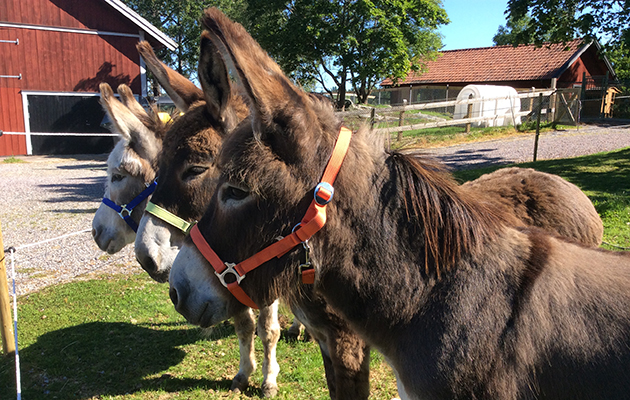Janou Bleekman and Granntevka Prince on the way to individual bronze at the young rider European Championships in 2017. Picture by Benjamin Clark Photography
Tributes have been paid to Granntevka Prince, who won Blenheim CCI3*, competed at four-star level and was a young rider medallist, after he was put down on Monday (28 May).
David and Gerry Mills’ 18-year-old had suffered a severely dislocated fetlock, which was irreparable.
Prince won the British Eventing six-year-old championship with Lucy McCarthy (née Wiegersma) in 2006 and at the end of 2007 finished 10th in the prestigious seven-year-old World Championships at Le Lion d’Angers. In 2008 he moved up to three-star, finishing second in a CIC3* at Burnham Market.
His most successful year with Lucy came in 2009 when he won the CCI3* at Blenheim and finished fourth on his CCI4* debut at Pau. At four-star, he was also ninth at Luhmühlen in 2010 and 23rd at Burghley in 2011.

Lucy Wiegersma and Granntevka Prince. Picture by trevor-meeks-photography.co.uk
In 2014 Prince joined Devon-based teenager Janou (Nui) Bleekman, who rides for The Netherlands. The pair formed a strong partnership and won the CCIJ* at Tattersalls that year and a CIC2* at Bicton Arena in 2016.
They also finished 10th in the junior European Championships in 2014 and contested three young rider European Championships, taking team silver and individual bronze at Millstreet last year.
“We would like to thank Prince’s owners David and Gerry Mills for trusting us and giving us the honour of having such a legend in our yard,” said Nui’s sister Althea. “He and Janou developed the most amazing partnership. Not only were they a formidable pair in competition, but they really did become best friends.
“Prince adored Nui, she was his person, he was her horse of a lifetime. The love and trust they had in each other shone through. She knew him better than she knows herself.
“He is missed so much already, but by none more so than David, Gerry and Nui.”
Welcome to a new arrival
The Bleekmans also welcomed new life into the world on Monday with the arrival of a filly foal who is “exactly the same colour as Prince, even down to the little star,” said Nui and Althea’ mother Clissy.

The foal is out of Grannalyn, who was bred by the Bleekmans by Prince’s sire Grannex. Grannalyn is also the granddam of a mare called Dasj, who is competing with Althea in the CCI3* at Tattersalls this week. She is also the dam of Oralyn, the mother of Laura Renwick’s showjumper Bintang.
This is the Bleekmans’ first foal by Jenson, who they are standing. He is a four-year-old Anglo European Studbook-licensed stallion by El Salvador.
“The Dutch experts really rate him, so let’s hope a star has been born to follow Prince — she is such a close relative and certainly looks his spitting image,” said Clissy.
Althea added: “We can only hope that a small part of Prince’s brilliance is now shining down on the next generation for us. If they can only be half as good as Prince, they will be legends in their own right.”
For all the latest news analysis, competition reports, interviews, features and much more, don’t miss Horse & Hound magazine, on sale every Thursday.















































